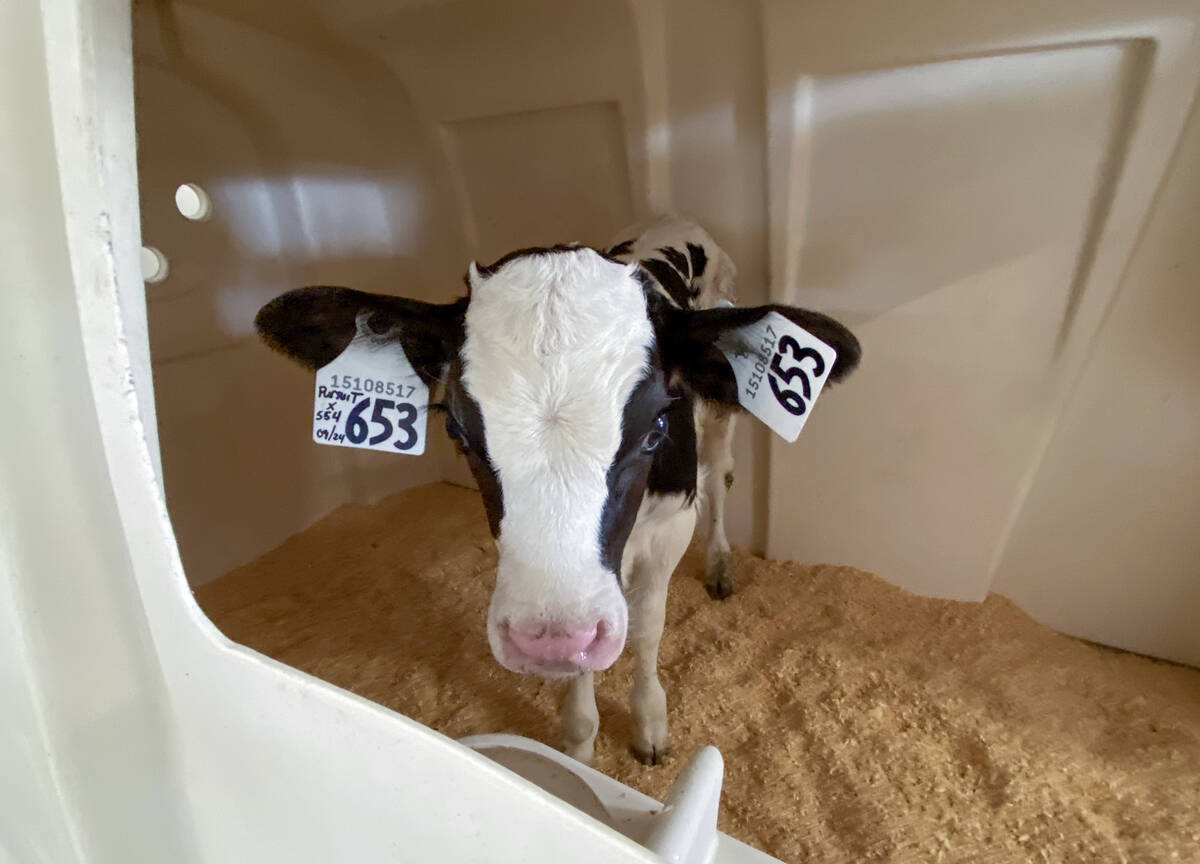Producers of small ruminants must pay close attention to a pregnant dam’s nutritional needs, especially those with multiples.
That was the message given by Dr. Robert Van Saun, Pennsylvania State University professor and extension veterinarian, to Goat Day attendees at Grey Bruce Farmers’ Week.
Without adequate nutrition, Van Saun said small ruminants face increased risk of late pregnancy metabolic disease, like pregnancy toxemia and milk fever.
Read Also

Lactanet turns methane expertise into business opportunity
Lactanet’s new fee-for-service breeding tool initiative to reduce greenhouse gas emissions in Canadian and Swiss Holstein herds will launch in April 2026.
“We characterize sheep and goats as small cows, and that’s inappropriate,” he said, adding a cow’s ketone threshold is double that of goats and sheep, which offers them better protection against pregnancy toxemia.
Why it matters: Nutrition is critical in reducing late gestation pregnancy toxemia and milk fever in small ruminants.
Non-small-ruminant practitioners don’t always know moderate ketone levels in sheep and goats indicate an issue, nor do they recognize the early symptoms of late gestation pregnancy toxemia.
Using a video of a Boer goat in late-stage pregnancy toxemia, Van Saun said the heavy breathing mimics a respiratory disease with fluid build-up in the legs.
“It’s not an infectious respiratory problem. It’s a compromise of air exchange because of fluid build-up, and this pressure is, again, from the mass (multiple fetuses) in the abdomen.”
Pregnancy toxemia occurs in dams carrying multiples and is caused by low blood glucose resulting in a negative energy balance, forcing fat stores to fill the deficit.
“This is a problem with twins, triplets, quads, quints and beyond,” said Van Saun, adding that discussions about selecting against large litter phenotypes are needed.
Stress can also contribute because small ruminants, particularly obese or skinny animals, mobilize fat more rapidly under stressful conditions like isolation, feed changes and transportation.
Small-ruminant livers only partially digest fat into ketones for other tissues. Too much fat causes a ketone spike, contributing to fatty liver disease or lactational ketosis. Death can result if not addressed quickly.
Van Saun said dams that lack appetite, are stationary and have swollen legs or sweet-smelling breath should be tested for ketones in the blood or urine and for blood glucose concentration.
“Any doe (or ewe) in late pregnancy showing abnormal behaviour, preg-tox should be your number one thought, then go from there.”
Obese, pregnant animals with low dry matter intake that causes mobilization of fat stores are at risk for fatty liver disease, said Van Saun. Overly thin pregnant dams are susceptible to starvation ketosis because they pull fat reserves from the organs.
“That’s the worst-case scenario,” he said.
Hypocalcaemia, or milk fever, is triggered by a drop in blood calcium during pregnancy because of inadequate dietary calcium or insufficient intake of a balanced calcium feed.
Van Saun said goats and sheep see a calcium drop in late pregnancy rather than lactation because blood calcium supports fetal bone production. Feeding alfalfa can boost protein and calcium to minimize the two critical metabolic diseases.
“Goats (and sheep), like any other species, do not eat per cents. They need to eat grams (of calcium),” Van Saun said.
Calcium levels will drop if intake is below recommendations and there is insufficient vitamin D for efficient gut absorption.
Parasites also reduce nutrients, increasing pressure on a dam to provide those nutrients to the fetus, he explained.
A single lamb represents 11 per cent of an ewe’s body weight. Twins are 21 per cent and triplets are 28 per cent. Sheep modelling stops at triplets, but sheep and goat litters are getting larger. Van Saun’s colleague recently performed an emergency C-section on a Boer dam with six fetuses.
“You get much above 20 per cent and mom can’t keep up.”
A dam will mobilize minerals in her bones, liver, and fat. However, body tissue must break down to release protein, compromising its ability to face metabolic changes while transitioning from pregnancy to lactation.
It can be challenging to ensure nutritional intake meets demand in late pregnancy when 60 to 70 per cent of fetal growth occurs. Van Saun said a strong starting point is a feed analysis report that identifies calcium levels and neutral detergent fibre (NDF), which could inhibit intake.
He showed attendees a feed analysis of “a fairly decent forage” with 12.7 per cent crude protein (CP) and 60 per cent total digestible nutrients.
With NDF at 59 per cent and calcium at .38 per cent, even a grain supplement wouldn’t provide the necessary calcium to avoid milk fever, he said.
National Research Council requirements set the daily dry matter intake for ewes at 3.74 pounds and crude protein at 103 grams. While a singleton dam could manage that, those with multiples may not.
A low, mid or high protein diet intake study of sheep pregnant with twins highlighted the relationship between nutrient quality, fetus growth and survivability.
Sheep intake of each diet fell below NRC guidelines at 2.24 lb. of DMI with eight per cent CP, 2.55 lb. DMI with 11 per cent CP and 3.01 lb. DMI with 15 per cent CP respectively.
The high protein diet exceeded CP requirements at 215 grams. The low protein diet realized a mere 80 grams per day and the mid protein achieved 141 grams per day.
“They analyzed for nitrogen, which is our proxy of how we measure protein,” Van Saun said. It showed no significant variation in wool, mammary gland or visceral organs, but skeletal muscle was affected.
Dams on low and mid-protein diets mobilized skeletal muscle to feed the fetus, while high-energy dams gained skeletal muscle.
The mid-to high protein lambs weighed 8.5 kg and 8.7 kg, respectively, while low-diet lambs were 7.5 kg at birth.
Van Saun said the takeaway is that measuring forage quality provides a starting point for providing appropriate levels of NDF, glucose precursors, calcium and protein. It will also direct the levels of vitamin A, D, E, and trace minerals required to give the dam and the fetus the best chance at health.















